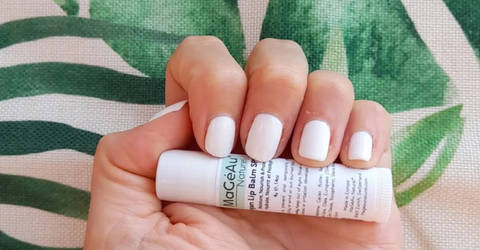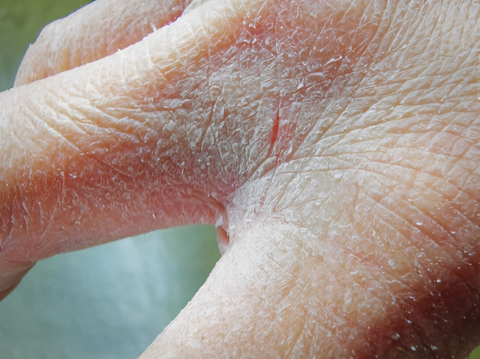What is Keratosis Pilaris?
Ever wondered about those tiny, rough bumps on your skin? You're not alone. Welcome to the world of keratosis pilaris, a common skin condition that causes small, rough bumps on the skin, typically on the back of the upper arms, thighs, and buttocks. It can also appear on the face, particularly in children. The bumps are usually white or red and may be accompanied by dry, rough skin and described as feeling like sandpaper or goosebumps.
How does Keratosis Pilaris Affects Skin?
The condition occurs when there is an excess of keratin, a protein that forms the protective outer layer of skin, in the hair follicles. This excess keratin causes the hair follicles to become blocked, which leads to the formation of small bumps on the skin's surface.
Now, before you panic, remember, this condition, known as keratosis pilaris, is more common among those with dry skin and can be aggravated by factors such as cold weather, low humidity, and tight clothing. Keratosis pilaris can also cause dry, rough skin in the affected areas, and in some cases, the bumps may become inflamed and itchy. However, the condition is typically harmless and does not cause any pain or discomfort. But fear not, dear reader, for we have the key to the gate of smoother skin.
While keratosis pilaris is a chronic condition that can persist for many years, it often improves with age, and many people see a significant improvement by their 30s. There are several treatments available to help reduce the appearance of the bumps and improve the texture of the skin, including moisturisers, exfoliants, topical retinoids, chemical peels, and laser therapy.
Keratosis Pilaris Causes
The exact cause of keratosis pilaris is a bit of a mystery, though it is believed to be a genetic disorder that affects the hair follicles.
The condition occurs when there is an excess of keratin, a protein that forms the protective outer layer of skin, in the hair follicles. This excess keratin causes the hair follicles to become blocked, which leads to the formation of small bumps on the skin's surface.
Keratosis pilaris often runs in families and may be inherited in an autosomal dominant pattern, meaning that a child has a 50% chance of inheriting the condition from a parent who has it. However, not all cases of keratosis pilaris are inherited, and some people may develop the condition spontaneously without a family history.
Keratosis Pilaris Symptoms
Curious about keratosis pilaris common symptoms? It may include the following:
- Dry, rough skin in the affected areas
- Itchy or inflamed bumps (in some cases)
- Worsening of symptoms in cold, dry weather
- Improvement of symptoms in warmer, more humid weather
It's important to note that keratosis pilaris can vary in severity from person to person and may improve or worsen over time. If you are concerned about your skin or experiencing any symptoms, it's best to consult a dermatologist for an accurate diagnosis and personalised treatment recommendations.
Keratosis Pilaris Diagnosis
Diagnosis of keratosis pilaris often involves a dermatologist's keen eye base. In most cases, the doctor can make a diagnosis simply by looking at the affected skin and feeling the texture of the bumps.
In some cases, a skin biopsy may be necessary to confirm the diagnosis or rule out other skin conditions. During a skin biopsy, a small sample of skin is removed and examined under a microscope to look for signs of keratosis pilaris or other skin disorders.
If you suspect that you may have keratosis pilaris, it's best to consult a dermatologist for an accurate diagnosis and personalised treatment recommendations. The dermatologist can also help to rule out other skin conditions that may have similar symptoms, such as eczema, psoriasis, or folliculitis.
Keratosis Pilaris Home Remedies
While there is no cure for keratosis pilaris, venturing into home remedies may help to improve the appearance and texture of the skin:
Regular moisturise: Keeping the affected skin well moisturised can help to reduce dryness and roughness. Look for a moisturiser that contains urea, lactic acid, or salicylic acid, which can help to exfoliate the skin and remove dead skin cells.
Gentle exfoliation: Exfoliating gently can help to remove dead skin cells and smooth the texture of the skin. Try using a gentle exfoliating scrub or a soft-bristled brush to gently exfoliate the affected areas.
Use of a humidifier: Using a humidifier in your home can help to add moisture to the air and prevent dryness, which can worsen symptoms of keratosis pilaris.
Prefer loose clothing: Wearing tight clothing can cause friction and irritation, which can aggravate symptoms of keratosis pilaris. Opt for loose-fitting clothing made from breathable materials, such as cotton.
Avoid hot showers: Hot water can dry out the skin and worsen symptoms of keratosis pilaris. Try to take lukewarm showers instead, and avoid using harsh soaps or shower gels that can strip the skin of its natural oils.
While these home remedies may help to improve the appearance of the skin, it's important to note that they may not work for everyone, and the results may vary depending on the severity of the condition. If you are experiencing persistent or severe symptoms of keratosis pilaris, it's best to consult a dermatologist for personalised treatment recommendations.
Keratosis Pilaris After Effects
Keratosis pilaris is typically a benign condition causing no serious health issues. However, the bumps and rough texture of the skin can be a cosmetic concern for some people, particularly if they are visible on areas of the skin that are frequently exposed.
In rare instances, severe cases might leave behind scarring or hyperpigmentation, a bit more noticeable on darker skin tones. This is more common in people with darker skin tones. But remember, keratosis pilaris isn't increasing the risk of developing skin cancer or other serious health problems.
While there is no cure for keratosis pilaris, there are several treatments available to help reduce the appearance of the bumps and improve the texture of the skin. These may include topical creams or lotions containing alpha hydroxy acids (AHAs), retinoids, or salicylic acid, as well as in-office treatments such as microdermabrasion or chemical peels.
If you are concerned about the after-effects of keratosis pilaris or experiencing any symptoms, it's best to consult a dermatologist for an accurate diagnosis and personalised treatment recommendations.
Best creams for keratosis pilaris
There are several types of creams that may be helpful in treating the symptoms of keratosis pilaris. Here are some of the best options:
Creams containing alpha hydroxy acids (AHAs): AHAs are a type of chemical exfoliant that can help to remove dead skin cells and smooth the texture of the skin. Look for creams that contain glycolic acid or lactic acid, which are both effective at treating keratosis pilaris.
Retinoid creams: Retinoids are a type of vitamin A derivative that can help to reduce inflammation and improve the texture of the skin. Tretinoin cream is a commonly prescribed retinoid for keratosis pilaris.
Creams containing salicylic acid: Salicylic acid is a type of beta hydroxy acid that can help to exfoliate the skin and unclog pores. This can be particularly helpful in treating the red, inflamed bumps that are sometimes associated with keratosis pilaris.
Moisturising creams: Keeping the skin well moisturised can help to reduce dryness and roughness. Look for creams that contain ingredients like urea or ceramides, which can help to hydrate the skin and improve its texture.
It's important to note that the effectiveness of these creams may vary depending on the severity of the condition and individual factors. If you are experiencing persistent or severe symptoms of keratosis pilaris, it's best to consult a dermatologist for personalised treatment recommendations.
Radiant Skin through Acceptance
The best moisturising lotion you can use is use MaGéAu naturel's natural Body Lotion that contains 100% natural hydrating and moisturising ingredients like Shea butter magnesium that will keep your hands hydrated, moisturised, soothed, and protected for a very long time.
Remember that keratosis pilaris is a chronic condition, and these treatments can only help manage its appearance, there is no known cure. So, if you have concerns about your skin, it's always best to consult a dermatologist for personalised recommendations.





Comments (0)
There are no comments for this article. Be the first one to leave a message!